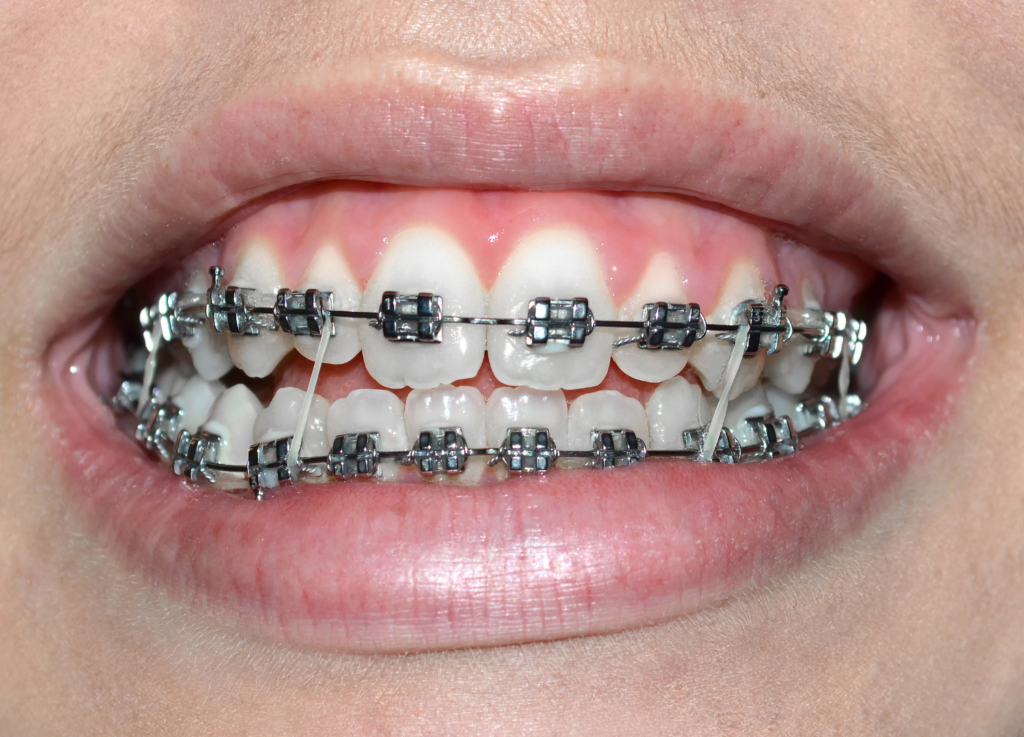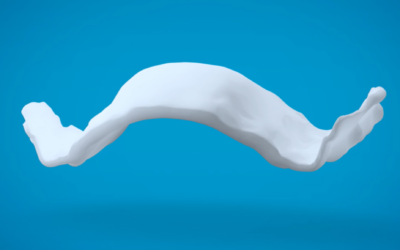When you think of braces, you probably picture brackets, wires, and rubber bands, but there’s a fascinating science happening beneath the surface that makes orthodontic treatment possible. Whether you’re already in braces or just starting to explore your options, understanding how braces actually move your teeth can give you a deeper appreciation for the process (and those perfect results you’re working toward!).
What Are Braces Designed to Do?
Braces are orthodontic appliances used to correct misaligned teeth and jaws. They work by applying controlled, continuous pressure over time, gradually guiding your teeth into better positions. But how do teeth, anchored in bone, actually move?
The answer lies in the biology of your periodontal ligament and bone remodeling.
The Biology of Tooth Movement
Each tooth sits in a socket within your jawbone and is held in place by a network of fibers called the periodontal ligament (PDL). This ligament acts like a tiny suspension system, it’s flexible but secure, allowing a small amount of movement under pressure.
When braces apply force to a tooth, here’s what happens:
- Compression on One Side: The PDL is compressed on one side of the tooth, which signals the body to break down bone in that area (a process called bone resorption).
- Tension on the Other Side: On the opposite side of the tooth, the PDL is stretched, signaling the body to build new bone (bone deposition).
- This continuous process of breaking down and rebuilding bone is called bone remodeling—and it’s the key to tooth movement.
Over time, as the bone remodels and the tooth shifts, the surrounding tissues adapt to support the new position.
The Role of Brackets and Wires
Braces use a combination of components to move your teeth in precise directions:
Brackets
These are the small square pieces bonded to each tooth. They serve as handles for the archwire to apply force to the tooth.
Archwires
The wire that runs through the brackets is what actually moves your teeth. Archwires are carefully shaped to reflect the ideal alignment of your teeth. When attached to your brackets, they apply gentle, consistent pressure.
Ligatures or Clips
These are small elastics or clips that hold the archwire in place. In self-ligating braces, a built-in clip does the job.
Rubber Bands (Elastics)
Elastics are often used to correct jaw alignment by applying pressure between the upper and lower teeth.
Other Appliances
In some cases, orthodontists use springs, expanders, or anchorage devices to help with specific types of movement. These may be part of a comprehensive orthodontics plan tailored to your needs.

Healthy Healing – What Allows Teeth to Move?
Tooth movement isn’t just a mechanical process, it’s also a biological one that deeply relies on the body’s natural ability to heal and remodel tissue. As previously mentioned, when braces or Invisalign apply pressure to teeth, it triggers the surrounding bone to break down and rebuild, allowing the teeth to shift into new positions. This process requires a healthy, well-nourished body to happen efficiently and safely. Just like healing a wound or building muscle, moving teeth depends on the body’s access to key nutrients and an overall state of wellness.
Calcium, vitamin D, magnesium, and vitamin C all play vital roles in maintaining strong bones and supporting the cellular repair involved in tooth movement. Without proper nutrition and systemic health, the bone around the teeth may not respond as effectively, potentially slowing progress or increasing discomfort. It’s also important to avoid prolonged use of anti-inflammatory medications like ibuprofen, as they can interfere with the inflammatory response needed for healthy tooth movement. Staying hydrated, eating a balanced diet, and avoiding inflammatory habits (like smoking) all help support successful orthodontic treatment. It’s a reminder that what’s happening in the mouth is connected to the body as a whole, true healing and alignment go hand in hand.
Why Does Tooth Movement Take Time?
Teeth don’t move overnight because your body needs time to safely remodel the bone around each tooth. Moving teeth too quickly could damage the roots or surrounding structures. Orthodontists carefully plan your treatment to move teeth in a way that’s safe, efficient, and long-lasting.
On average, braces treatment can take months, depending on the complexity of your case and how well you follow your orthodontist’s instructions (like wearing rubber bands or coming in for adjustments on schedule).
When Braces May Not Be the Right Fit: Understanding Medical and Healing Limitations
While orthodontic treatment is safe and effective for most people, certain patients may not be ideal candidates for braces due to compromised healing ability or underlying health conditions. Individuals taking medications such as steroids or bisphosphonates (commonly prescribed for osteoporosis) may experience impaired bone remodeling, which is essential for safe and effective tooth movement. Similarly, patients with advanced periodontal disease or significant bone loss around the teeth are at higher risk of complications, as the supporting structures of the teeth may not be stable enough to tolerate the forces applied by braces. Heavy smokers also face delayed healing and increased risk of gum disease, making orthodontic treatment less predictable. In these cases, it’s crucial for patients to undergo a thorough evaluation and work closely with their orthodontist and general physician to determine if braces are appropriate or if other options should be explored.
What Happens After Braces Come Off?
Once your teeth are in their new positions, your orthodontist will provide a retainer to help hold them in place while your bone and gum tissue stabilize. Skipping wearing your retainer can allow your teeth to drift back, so don’t skip that final step! A study published in the American Journal of Orthodontics and Dentofacial Orthopedics found that 40% to 90% of patients exhibited unacceptable dental alignment 10 years post-treatment due to failure to wear their retainers. This highlights the importance of consistent retainer use to maintain results.
The Big Picture
Braces are more than just metal and wires, they’re a carefully engineered system that works with your body’s natural processes to create a healthy, beautiful smile. Behind every adjustment is a balance of biology, physics, and expert planning.
So, the next time your braces feel a little tight after an adjustment, know this: your teeth are on the move, and science is making it happen!
Ready to start your smile journey? Contact us at Daia Orthodontics in Rochester Hills today to schedule your complimentary consultation. Our team is here to guide you every step of the way!




